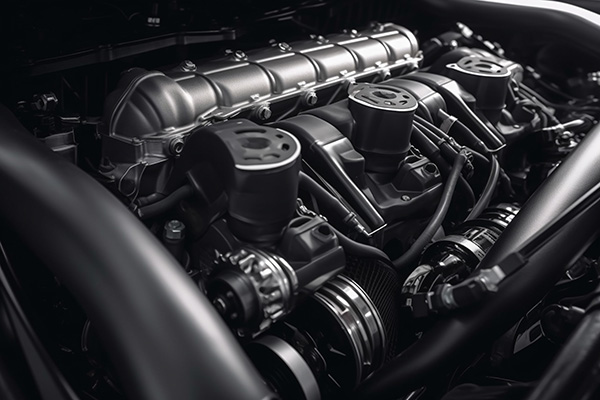
Have you ever wondered about the mysterious component known as a purge valve in your vehicle's engine system? While it may seem insignificant, the purge valve is crucial in maintaining proper emissions control and engine performance.
The Purge Valve
The purge valve is a key component of the vehicle's evaporative emissions control system, which is designed to prevent harmful fuel vapors from escaping into the atmosphere. It works with the charcoal canister, which absorbs and stores fuel vapors from the fuel tank.
Function of the Purge Valve
The primary function of the purge valve is to control the flow of fuel vapors from the charcoal canister to the engine intake manifold. During certain engine operating conditions, such as when the engine is warm and running at a steady speed, the purge valve opens to allow fuel vapors to be drawn into the engine and burned along with the air-fuel mixture.
Maintaining the Purge Valve
Periodically cleaning the purge valve can help prevent the buildup of debris and contaminants that may hinder its operation. Use a suitable cleaner or solvent to dissolve any deposits and gently brush away residue from the valve's exterior and internal components. Ensure thorough cleaning to restore optimal flow and function.
During routine maintenance checks, inspect the purge valve for any signs of wear, corrosion, or damage. Pay close attention to the valve's housing, connectors, and seals for cracks, leaks, or deterioration.
Perform diagnostic tests to assess the purge valve's functionality and response. Utilize a scan tool or diagnostic device to activate the valve and monitor its operation in real time. Verify that the valve opens and closes smoothly without sticking or hesitation, and ensure proper vacuum pressure is maintained during activation.
If any signs of wear, damage, or malfunction are detected during inspection or testing, replacing worn or faulty components of the purge valve may be necessary. Obtain a replacement purge valve from a reputable manufacturer or dealership, and follow proper installation procedures to ensure a secure and reliable fit.
If you're unsure about performing maintenance or repairs on the purge valve yourself, it's advisable to seek assistance from a qualified mechanic or automotive technician. They have the expertise and specialized equipment to diagnose purge valve issues accurately and perform necessary repairs or replacements with precision.
Signs of a Faulty Purge Valve
Identifying potential issues with the purge valve is crucial to prevent more significant problems from arising in your vehicle's engine system. Here are some common signs that may indicate a faulty purge valve:
Illumination of the Check Engine Light
One of the primary indicators of a purge valve problem is the illumination of the check engine light on your vehicle's dashboard. The onboard diagnostics system may detect irregularities in the purge valve's operation and trigger the check engine light to alert you to a potential issue.
Rough Idling or Stalling
A malfunctioning purge valve can disrupt the air-fuel mixture entering the engine, leading to irregular engine idling or stalling. You may notice that your engine idles roughly or experiences occasional stalling, particularly when the vehicle is stationary or operating at low speeds.
Difficulty Starting the Engine
A faulty purge valve can also affect the engine's starting process, causing difficulty or delays in starting the vehicle. You may experience prolonged cranking times or multiple attempts to start the engine, especially after the vehicle has been sitting for an extended period.
Increased Fuel Consumption
Another telltale sign of a purge valve problem is increased fuel consumption. When the purge valve fails to control the flow of fuel vapors properly, it can lead to excessive fuel entering the engine, resulting in higher fuel consumption than usual. Monitoring your vehicle's fuel efficiency can help detect potential purge valve issues.
Strong Fuel Odor from the Vehicle's Exhaust
A malfunctioning purge valve may allow unburned fuel vapors to escape from the engine and enter the exhaust system. As a result, you may detect a strong fuel odor emanating from the vehicle's exhaust, indicating the presence of unburned fuel in the exhaust gasses.
Testing and Replacement
If you suspect that your vehicle's purge valve is faulty, a qualified mechanic must have it tested. They can perform diagnostic tests, such as checking for proper valve operation and inspecting for any signs of damage or obstruction. The purge valve can be replaced if necessary to restore proper function and emissions compliance.
For some of the best purge valve maintenance and all other engine-related services, call Chicane Motorsport! We will schedule you for a visit and take care of everything.